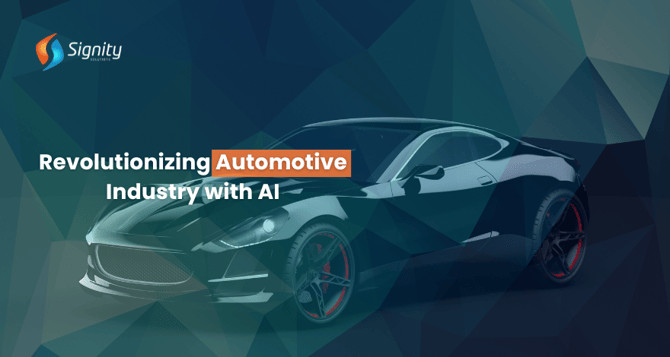Revolutionizing the Automotive Industry with AI
Discover how OpenAI's advanced language models are revolutionizing the automotive industry, enhancing safety, efficiency, and user experiences with AI-powered systems implemented using Node.js.

The automotive industry is experiencing a revolutionary transformation with the infusion of Artificial Intelligence (AI). OpenAI's advanced language models, renowned for their natural language understanding, are playing a pivotal role in enhancing vehicles' capabilities. This article explores the impact of AI development by OpenAI in the automotive sector, delving into the principles behind it and providing detailed technical implementations using Node.js.
The Evolution of Automotive AI
As vehicles become more than just a means of transportation, the integration of AI technologies is reshaping the automotive landscape. OpenAI's language models are not only advancing communication but also enabling intelligent interactions within vehicles, paving the way for enhanced safety, efficiency, and user experiences.
Integrating OpenAI into Automotive Systems with Node.js
Let's dive into the technical aspects of integrating OpenAI into automotive applications. For this example, we'll focus on creating an AI-powered in-car assistant for natural language interactions.
Node.js Implementation
1. Set Up Your Development Environment
Begin by setting up your Node.js development environment and installing the required packages.

2. Create an Express Server for In-Car Assistant
Set up an Express.js server to handle natural language queries within the vehicle using OpenAI.
const express = require('express');const { OpenAI } = require('openai'); // Assuming OpenAI package is imported const app = express();const openai = new OpenAI('your-api-key'); // Initialize OpenAI with your API key // Endpoint to handle natural language queries within the vehicleapp.get('/in-car-assistant', async (req, res) => { try { // Example natural language query received from the vehicle const query = req.query.query; // Call OpenAI's API to process the natural language query const response = await openai.complete({ engine: 'text-davinci-002', // Specify the engine for language processing prompt: query, // Pass the natural language query as a prompt maxTokens: 50, // Maximum number of tokens in the response temperature: 0.7, // Higher temperature value for more creative responses }); // Send the AI-generated response back to the vehicle res.json({ response: response.data.choices[0].text }); } catch (error) { // Handle any errors that occur during processing console.error('Error processing natural language query:', error.message); res.status(500).json({ error: 'Internal server error' }); }}); // Start the Express.js serverconst PORT = process.env.PORT || 3000;app.listen(PORT, () => { console.log(`Server is running on port ${PORT}`);}); |
3. Run Your App
Run your Node.js server using the following command:

Your in-car assistant system should now be accessible at `http://localhost:3000/in-car-assistant` or the specified port.
Applications of OpenAI in Automotive
1. Natural Language Commands:
Users can interact with their vehicles using natural language, issuing commands for navigation, entertainment, and more.
2. Smart Navigation Systems:
AI-powered navigation systems can provide real-time, context-aware route suggestions based on user preferences and traffic conditions.
3. Driver Monitoring:
OpenAI models can analyze driver queries and provide assistance while monitoring the driver's state for safety purposes.
4. Voice-Activated Controls:
Voice-activated controls powered by OpenAI enable a hands-free, safer driving experience.
Considerations and Best Practices
1. Safety First:
Prioritize safety when implementing AI features in vehicles, ensuring that AI interactions do not distract or compromise the driver's attention.
2. Privacy and Security:
Implement robust measures to protect user data and ensure that AI interactions adhere to privacy standards.
3. Localized Language Understanding:
Fine-tune language models for localized accents and dialects to enhance the accuracy of natural language interactions.
4. Real-time Responsiveness:
Optimize AI models for real-time responsiveness to provide seamless interactions within the vehicle.
5. OTA Updates:
Implement over-the-air (OTA) updates for AI models to ensure continuous improvement and feature enhancements.
Conclusion
The fusion of OpenAI, Node.js, and automotive AI technologies marks a significant milestone in the development of intelligent vehicles. By leveraging these technologies, developers can create vehicles that are not just modes of transportation but intelligent companions, enhancing safety, convenience, and overall driving satisfaction.
By leveraging these technologies, developers can create vehicles that are not just modes of transportation but intelligent companions, enhancing safety, convenience, and overall driving satisfaction.


%201-1.webp?width=148&height=74&name=our%20work%20(2)%201-1.webp)


.png?width=344&height=101&name=Mask%20group%20(5).png)
















